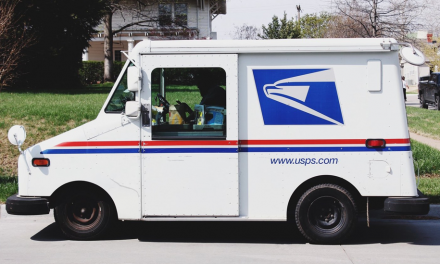
USPS exploring possibilities of digital postal mail
The US Postal Service is now exploring possible opportunities for getting into digital forms of communications, including hybrid or digital postal mail services. Two reports came out last month recommending that the USPS should look into opportunities for revenues in new electronic forms of communication, one from the USPS inspector general and one from the Government Accountability Office (GAO).
Commissioned by Congressman Stephen Lynch, the GAO report advised the Postal Service to learn from foreign posts that have already achieved success in digital technology.
Yesterday, Postmaster General Pat Donahoe told the Congressman that his team was now examining various ideas in that direction, including working with partners.
He said this included the possibility of digital-to-hard copy services, hard copy-to-digital services and even digital-to-digital communication systems and echoed the inspector general’s view that the USPS could build on its public trust to provide a secure electronic mail platform.
Donahoe said: “We know that the Postal Service provides tremendous opportunities in security in that entire market and we think that there’s plenty of opportunity for growth there.”
Strategy for the future
The Postal Service told its Mailers Technical Advisory Committee partners last month that it was looking into new areas like digital mail services.
Paul Vogel, the USPS president and chief marketing officer said the Postal Service had been holding innovation symposiums to raise fresh ideas, and was now putting together a “strategy for the future”.
This would include new ideas for USPS core products, including new incentives for mailers, but would also include hybrid, digital or electronic innovations such as a digital-to-physical mail service, a mail-scanning physical-to-digital service, and pure digital services.
Digital services might include an electronic postmark system as a kind of certified e-mail service, a secure digital mailbox service and an electronic bill presentment and payment system, which would allow consumers to manage and pay utility bills online.
Congressman Lynch said yesterday that he had spoken to companies already developing digital communication systems, including Pitney Bowes and companies operating in Europe.
He said: “They’ve got systems where you can actually pull up on your lap top or on your iPad and click on your mail before it can be delivered, and you can click off the stuff you don’t want to have delivered.”
But the Congressman from Massachusetts added a warning that he believed that as more and more people used such services, the USPS would find it difficult to prevent physical mail volumes from further declines.
The USPS has tried digital communications systems before, launching a products as far back as 10 years ago such as the electronic bill presentment and payment system eBillPay, and secure electronic delivery services like PosteCS, which allowed the emailing of documents too large for email services at the time.
However, PosteCS was cancelled in 2002, while eBillPay was discontinued in 2004.
“Rapid growth”
With email services now seen as the preserve of unsolicited spam messages, a number of companies are re-awakening the idea of a secure digital mail box in the American market – with or without the USPS on board.
Digital mail technology developer Zumbox said yesterday that it is now experiencing “rapid growth” because of increasing awareness of potential in the digital mail services market.
The Los Angeles-based company is offering a platform to transfer transactional, financial and government mail to a secure online system in which every household in America has its own digital mailbox.
Commenting on the US Postal Service taking notice of the digital mail services market, Zumbox CEO John Payne told Post&Parcel today that he believed the USPS could play “any one of a number of different roles” in the delivery of digital and hybrid mail.
Payne, a former CEO of online postage company Stamps.com, said of the USPS: “Particularly in native digital postal mail, it could be a direct market participant, a regulator of third parties, an infrastructure provider or even a licensor of it’s well trusted consumer brand and standards. Given how the Internet works, any one of these is a possibility.”












